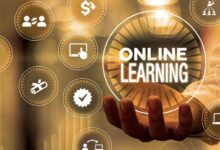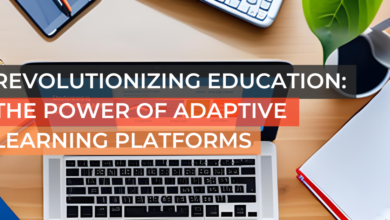Online Learning: Revolutionizing Education in the Digital Age
Contents
- 1 A Preamble: Embracing the Future of Learning
- 2 Introduction: Unveiling the World of Online Learning
- 3 Strengths of Online Learning: Unlocking the Potential
- 4 Weaknesses of Online Learning: Addressing the Challenges
- 5 Frequently Asked Questions (FAQs) on Online Learning
- 5.1 1. What are the benefits of online learning?
- 5.2 2. What are the challenges of online learning?
- 5.3 3. Is online learning as effective as traditional face-to-face learning?
- 5.4 4. Who is online learning suitable for?
- 5.5 5. What are the different types of online learning platforms?
- 5.6 6. How can I ensure success in online learning?
- 5.7 7. How can I access online learning opportunities?
- 5.8 8. Is online learning recognized by employers?
- 5.9 9. Can I earn a degree or certification through online learning?
- 5.10 10. What are the future trends in online learning?
- 5.11 11. How can I evaluate the quality of an online learning program?
- 5.12 12. What are the ethical considerations in online learning?
- 5.13 13. How can I protect my privacy and data in online learning environments?
- 6 Conclusion: Embracing the Transformative Power of Online Learning
- 7 Disclaimer
A Preamble: Embracing the Future of Learning
Hello, esteemed readers! In the ever-evolving landscape of education, online learning has emerged as a transformative force, redefining the way we acquire knowledge and develop our skills. This groundbreaking approach has shattered geographical barriers, expanded access to education for diverse demographics, and empowered learners to pursue their educational goals with unparalleled flexibility. As we delve into the intricacies of online learning, let us explore its strengths, weaknesses, and the profound impact it is having on the educational landscape.
Introduction: Unveiling the World of Online Learning
Online learning, also known as e-learning, encompasses the delivery of educational content and instruction through the internet. It leverages a vast array of digital platforms, including learning management systems, video conferencing tools, and interactive simulations, to facilitate the teaching and learning process. This innovative approach has gained widespread adoption in recent years, with millions of students worldwide embracing its transformative benefits.
Online learning empowers learners with unprecedented flexibility and convenience. Students can access course materials and participate in online discussions from anywhere with an internet connection, allowing them to balance their education with other commitments such as work, family, and personal pursuits. Additionally, online learning offers a highly personalized learning experience, enabling students to progress at their own pace and focus on areas where they need the most support.
The benefits of online learning extend beyond individual students. It has also revolutionized the way educational institutions operate. Online learning platforms have enabled universities and colleges to expand their reach and offer courses and programs to a wider audience, including those who may not have the opportunity to attend traditional face-to-face classes. Furthermore, online learning has created new revenue streams for educational institutions, allowing them to invest in innovative learning technologies and expand their course offerings.
Strengths of Online Learning: Unlocking the Potential
Accessibility and Flexibility
One of the most significant strengths of online learning is its remarkable accessibility. It breaks down geographical barriers, allowing students from remote areas or with limited mobility to access high-quality education. Additionally, online learning offers unparalleled flexibility, enabling students to study at their own pace, on their own schedule, and from any location with an internet connection.
Cost-Effectiveness
Compared to traditional face-to-face education, online learning is often more cost-effective. Students save on transportation costs, accommodation expenses, and other associated fees. Additionally, online learning materials are typically more affordable than traditional textbooks and course materials.
Personalized Learning Experience
Online learning platforms leverage data analytics and adaptive learning technologies to provide a highly personalized learning experience. Students receive tailored instruction based on their individual needs, strengths, and learning styles. This personalized approach enhances engagement, improves motivation, and optimizes learning outcomes.
Variety of Course Offerings
Online learning platforms offer a vast and diverse range of course offerings, including specialized courses, degree programs, and professional development opportunities. This variety empowers students to explore new fields, pursue their passions, and develop in-demand skills.
Scalability and Reach
Online learning platforms are highly scalable, allowing educational institutions to reach a wider audience and offer courses and programs to a larger number of students. This scalability has the potential to democratize education and make it accessible to individuals who may have been previously excluded from traditional educational pathways.
Weaknesses of Online Learning: Addressing the Challenges
Lack of Social Interaction
One of the potential drawbacks of online learning is the lack of face-to-face interaction with instructors and peers. This can be a significant challenge for students who thrive on in-person collaboration and discussion.
Technical Difficulties
Online learning requires access to reliable internet connectivity and technical devices. Students with limited access to technology or those who experience technical difficulties may face barriers to participation and success in online learning environments.
Self-Discipline and Motivation
Online learning requires a high level of self-discipline and motivation. Students need to be able to manage their time effectively, stay organized, and maintain their focus without the structure and support of a traditional classroom setting.
Assessment Challenges
Assessing student learning in online environments can be challenging. Instructors need to develop innovative assessment methods that ensure the integrity and validity of the assessment process while accommodating the unique characteristics of online learning.
Digital Divide
Despite its accessibility advantages, online learning can exacerbate the digital divide. Individuals without access to technology or with limited digital literacy skills may face barriers to participating in online learning environments.
| Strength | Weakness |
|---|---|
|
Accessibility and Flexibility |
Lack of Social Interaction |
|
Cost-Effectiveness |
Technical Difficulties |
|
Personalized Learning Experience |
Self-Discipline and Motivation |
|
Variety of Course Offerings |
Assessment Challenges |
|
Scalability and Reach |
Digital Divide |
Frequently Asked Questions (FAQs) on Online Learning
1. What are the benefits of online learning?
2. What are the challenges of online learning?
3. Is online learning as effective as traditional face-to-face learning?
4. Who is online learning suitable for?
5. What are the different types of online learning platforms?
6. How can I ensure success in online learning?
7. How can I access online learning opportunities?
8. Is online learning recognized by employers?
9. Can I earn a degree or certification through online learning?
10. What are the future trends in online learning?
11. How can I evaluate the quality of an online learning program?
12. What are the ethical considerations in online learning?
13. How can I protect my privacy and data in online learning environments?
Conclusion: Embracing the Transformative Power of Online Learning
In conclusion, online learning has emerged as a powerful force in the educational landscape, offering a wealth of benefits and opportunities for learners worldwide. Its accessibility, flexibility, and personalized nature have made it an attractive option for students of all ages and backgrounds. However, it is essential to acknowledge the potential challenges associated with online learning, such as the lack of social interaction and the need for self-discipline. By carefully considering the strengths and weaknesses of online learning and addressing the challenges effectively, we can unlock its full potential and empower learners to thrive in the digital age.
As online learning continues to evolve, we can expect to see even more innovative and transformative approaches to education. Educational institutions, policymakers, and technology providers must work together to ensure that online learning is accessible, equitable, and of the highest quality. By embracing the potential of online learning, we can create a future where every learner has the opportunity to reach their full potential, regardless of their location, background, or circumstances.
Disclaimer
The information provided in this article is intended for general knowledge and informational purposes only. It does not constitute professional advice and should not be relied upon as such. Readers are advised to seek the advice of qualified professionals for specific guidance and support. The author and publisher disclaim any liability for any decisions made or actions taken based on the information provided in this article.









